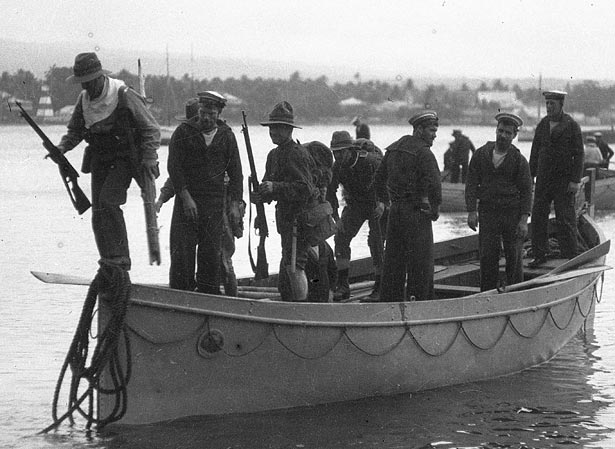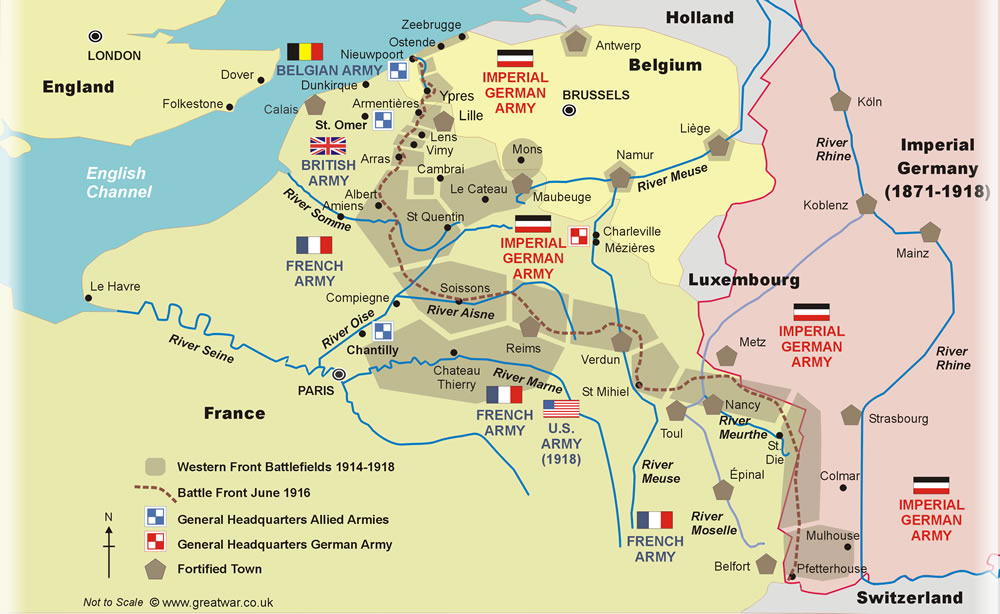29 August 1914
In Australia’s first coalition operation, a New Zealand Expeditionary Force of 1400 troops landed at Apia, Western Samoa, covered by the guns of HMAS AUSTRALIA, and the cruisers HMAS MELBOuRNE, HMS PSYCHE, HMS PYRAMUS, HMS PHILOMEL and the French MONTCALM. With no troops to defend the islands, the German Administrator surrendered on 30 August. The wireless station and harbour facilities were thereafter denied to Von Spee’s squadron.
 http://www.nzhistory.net.nz/media/in...nex-samoa-1914
http://www.nzhistory.net.nz/media/in...nex-samoa-1914
The Singapore Free Press and Mercantile Advertiser published this story about the capture of a Russian Volunteer Fleet Steamer by SMS Emden:
http://eresources.nlb.gov.sg/newspap...829-1.2.8.aspx
Meanwhile in the Indian Ocean, SMS EMDEN steamed sixty or seventy miles off the coast of Sumatra. Nothing unusual had happened for days and the crew spent most of their time in work detail. Upkeep was difficult in the tropics and though everything was done to keep the EMDEN neat and trim, she slowly deteriorated from the wear and tear of repeated coaling operations. Paint for touch ups had run out and much of the pain on the superstructure had started to turn a shabby rust colour. The First officer was still not pleased with the fourth "funnel" that had been fitted to disguise EMDEN as a British cruiser. He suggested to the skipper that a better one be built and once it was in place an untrained eye could mistake the EMDEN for a British cruiser such as the YARMOUTH. The MARKOMANNIA was ordered to come alongside EMDEN and assist with the alignment of the false funnel. With a boiler installed below, it would even provide a convincing puff of "smoke" when needed.
Despite there still being plenty of fresh water on board, fresh food was now becoming scarce and the cooks resorted to serving up corned beef in various disguises. Most troubling however was the shortage of soap. Soapsuds were used first to wash the crew, then the laundry and finally the ship. The Chinese laundrymen held to a tiny ration, turned out uniforms in an unsightly grey colour like that of the wooden decks.
Arras evacuated by the French forces.
First Battle of Guise begins. Following the fall of Charleroi and the British withdrawal from Mons, the French Fifth Army was also retreating south to the Oise river. The French made a counter-attack at the
Battle of Guise (29th August 1914) in the area of St. Quentin and Guise to hold a line there north of the Oise river on 29th August. The position at Guise was, however, precarious and the order was given to withdraw. The French Fifth Army continued its retreat south across the river Oise, destroying the bridges behind it.
By the end of August the French and the German Armies had sustained some 300,000 casualties, including wounded or killed, on both sides. The German advance had successfully penetrated the French border in several places and was pressing on with its advance following on the heels of the French and British forces withdrawing in a south-easterly direction.
The Women’s Defense Relief Corps is formed in Britain. Though women’s rights organizations in Britain had initially opposed the country’s entrance into the First World War, they reversed their position soon enough, recognizing the potential of the war effort to gain advancement for British women on the home front. As early as August 6, 1914, just one day after Britain declared war on Germany, an article published in the women’s suffrage newspaper
Common Cause stated that: "In the midst of this time of terrible anxiety and grief, it is some little comfort to think that our large organization, which has been completely built up during past years to promote women’s suffrage, can be used to help our country through the period of strain and sorrow."
In addition to the two nursing organizations that existed in 1914—the First Aid Nursing Yeomanry (FANY) and the Voluntary Aid Detachments (VADs)—several new women’s organizations sprung into being over the course of the war. Created with the support of the British secretary of state for war, Lord Horatio Herbert Kitchener, the Women’s Defense Relief Corps came into being in late August 1914. The corps was made up of two divisions: a civil section, the goal of which was to substitute women for men in factories and other places of employment in order to free those men for military service; and a "semi-military" or "good citizen" section, where women were actively recruited for the armed forces. This latter group was trained in drilling, marching and the use of arms; its members were exhorted to protect not only themselves but their loved ones on the home front in case of possible invasion by the enemy.
Sedan taken by German forces.
German airship "Z.-5" brought down by gunfire at Mlawa (Poland).
Found this clear map that gives an overview of the Western Front from 1914-18:
